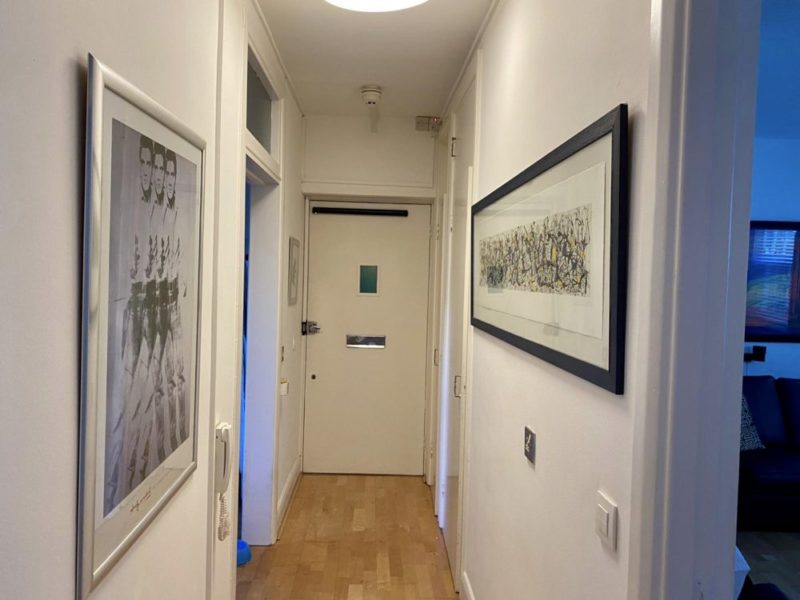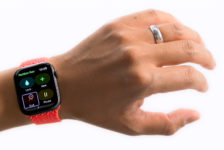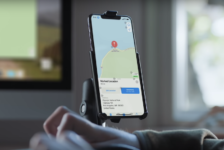Readers of Aestumanda may recall I had my electric door opener automated with Amazon Alexa voice control just before the UK went into Covid 19 lockdown earlier this year. Due to the lockdown I have had few opportunities to use the new functionality, which helps me get in and out of my flat unaided, because I have been shielding. I’ve only used it with my indoor Amazon Echo smart speakers when I have received the occasional home shopping delivery.
Outside my flat in the street, where there are no indoor Amazon smart speakers handy, the solution relied on me wearing Amazon’s wireless Echo Buds to summon Alexa to open the door but they don’t have deep integration with my Apple iPhone. For this reason Apple’s Airpods were always my preferred option for controlling my electric door opener outside my flat as I can do so much more with them when they are connected to my iPhone.
However, a problem that many Apple users face is that the company’s technology is not integrated with many smart home devices and platforms and the few that do connect are at the expensive end of the spectrum. This was the case with the eWeLink WiFi module that controls my door; there was no easy and direct compatibility with Apple’s Siri voice assistant.
However, thanks to a YouTube video by the popular smart home vlogger Paul Hibbert I have come up with a really effective workaround solution. I will leave it to Paul’s useful video to explain exactly what I was able to implement but the solution connects Apple’s Siri and Shortcuts app to my eWeLink wireless switch module which commands my electric door opener to open my flat door when I am wearing my Airpods and I give a Hey Siri voice command. Essentially, Siri turns into an IFTTT trigger using the IFTTT Webhooks service to control my door. IFTTT is a free platform that helps all your smart home products and services work better together.
On one of my first trips outside, since lockdown was eased for people shielding in the UK, I was able to open my flat door myself with a custom Siri voice command, “Hey Siri open sesame”, and go out for a walk in my wheelchair in the sun. While out on my walk, I was able to text my mum dictating the message hands-free with my voice using the Always on Siri feature in my Airpods and tell her I was out enjoying the sunshine. I was able to listen to her reply read out to me automatically by Apple’s Announce Messages with Siri feature through my Airpods. At the same time, I could play my favourite Apple Music playlist, and I felt safe in the knowledge that if I did have a problem out of my home on my own I could easily phone my carer with Siri’s help.
This is a snapshot of the kind of independence this technology gives severely physically disabled people like me and you cannot put a price on it. If you were to try you would come up with a whopping £1,500 to achieve this independence, which is often way beyond the means of many disabled people. It’s why I am calling on the government to set up a Motability-like finance scheme for smart technology so more severely disabled people can enjoy the independence, choice and control smart technology can offer.
As Paul makes clear in his video his method can be used to control almost any smart device as I have found by adding Apple Siri control to my Somfy electric blinds, which up until now have only been controlled by Amazon Alexa. Despite Somfy announcing almost two years ago that their electric blinds will be compatible with Apple’s Homekit platform this has yet come to fruition. Sadly, it’s an all too familiar story as smart device manufacturers struggle to comply with Apple’s stringent privacy and security requirements.
I have been happy with the Amazon Alexa integration to control my smart home devices indoors but adding Apple Siri integration is now another option, especially when I’m going out. Ideally, as I am primarily a Apple consumer, it would be better if the company did more to integrate with a wider range of smart home devices. It would certainly add some speed to the Siri commands I am making if there was tighter integration rather than these workarounds. However, on the whole, the Siri solutions I have been able to implement work extremely well and are reliable.
Adding Apple Siri integration to more competitively priced smart home devices will be good for consumers generally, and for accessibility and physically disabled people who rely on this technology so much in their daily lives. Hopefully, the California tech giant is listening.
2 Comments
Leave a Reply
You must be logged in to post a comment.







Paul Hibbert
Thanks for the shout out. This is a wonderful piece of writing, good work! 🙂
Paul
Sérgio Moreira
Just a small note, if you want to control almost any smart home device with siri, just use home assistant. I even turn on and off my windows computer. You can also send devices from home assistant to alexa and google (but is not as simple as sending them to homekit, there’s a bit programming inbolved for those 2 platforms).